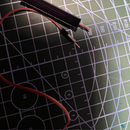Introduction: The Ultimate Pencil Case
Are you like me and hate regular pencil cases? They take up so much space, are bulky, things are hard to put in and take out and it's a nightmare finding anything after a few days of using. That's why I designed The Ultimate Pencil Case. It is elegant, small and fits everything you need.
I'm currently enrolled in the first grade of the 5th High School.
Supplies
- 3D printer
- filament
- superglue
- pencil sharpener (optional)
Step 1: 3D Design
I'll go through the process of making the 3D design step-by-step so that you can modify the case to suit your needs. Although I think the case is fairly universal. The design was made in Fusion360 so I attached a link to the project if you want to change anything in the design: https://a360.co/3UTVB1g
Step 2: Create the Main Shape
First, find the shape you want your case to be. I've chosen it to be a 40x40mm square with 3 rounded edges to make it feel good in the hand but to still have space in the case. Then use extrude and choose the height you want the case to be.
Step 3: Sketch Up Holes
Everyone has different things in their pencil cases. My design features places for 3 normal pens, 3 color pens, a 20cm ruler, a pencil, an eraser, a pencil sharpener, and a small glue stick. The holes should fit all pencils, though I recommend that you use the measure tool in Fusion and check. After sketching use extrude and cut the holes in the cuboid you created earlier. It's best to use the Wireframe visual setting so that you see through the walls and are sure no two holes go over each other. On the bottom bar Display settings -> visual style -> wireframe.
Step 4: 3D Print
You have 6 parts to print:
- Main body
- Flap
- Eraser holder
- Pencil clippings cap
- Clip (the piece that snaps and keeps the pencil case closed)
- Gluestick cap
I printed the case from PLA though any other filament will do the job.
I used the following settings in my slicer:
- infill: 30%, it's a big print and I found 30% to be both durable and material saving
- walls (perimeters) number: 3, a pencil case has to go through a lot so the more walls the better.
- top/bottom walls: 3
- layer height: 0.2mm, although any other is OK
- supports: Yes, the glue hole requires supports, I recommend using the setting "Break Up Support In Chunks" as it will make removing support material from the eraser hole much, much easier.
Step 5: Assemble
Put the flap on top of the main body, where it should sit, with it's hinge parts being exactly in between the hinge parts of the lower body. Cut about 5cm piece of any filament and push it through the hole, remove the excess. It should fit nicely, but you can use extra glue to make sure it won't disassemble. Repeat the process with the clip. Glue the sharpener in place and put the clippings cap into the hole
Step 6: Done!
Your case is done! Congrats! Enjoy the beauty and compactness of it.

Participated in the
Back to School: Student Design Challenge













